L. Andrea Dunbar
SAND: One-Shot Feature Selection with Additive Noise Distortion
May 06, 2025Abstract:Feature selection is a critical step in data-driven applications, reducing input dimensionality to enhance learning accuracy, computational efficiency, and interpretability. Existing state-of-the-art methods often require post-selection retraining and extensive hyperparameter tuning, complicating their adoption. We introduce a novel, non-intrusive feature selection layer that, given a target feature count $k$, automatically identifies and selects the $k$ most informative features during neural network training. Our method is uniquely simple, requiring no alterations to the loss function, network architecture, or post-selection retraining. The layer is mathematically elegant and can be fully described by: \begin{align} \nonumber \tilde{x}_i = a_i x_i + (1-a_i)z_i \end{align} where $x_i$ is the input feature, $\tilde{x}_i$ the output, $z_i$ a Gaussian noise, and $a_i$ trainable gain such that $\sum_i{a_i^2}=k$. This formulation induces an automatic clustering effect, driving $k$ of the $a_i$ gains to $1$ (selecting informative features) and the rest to $0$ (discarding redundant ones) via weighted noise distortion and gain normalization. Despite its extreme simplicity, our method delivers state-of-the-art performance on standard benchmark datasets and a novel real-world dataset, outperforming or matching existing approaches without requiring hyperparameter search for $k$ or retraining. Theoretical analysis in the context of linear regression further validates its efficacy. Our work demonstrates that simplicity and performance are not mutually exclusive, offering a powerful yet straightforward tool for feature selection in machine learning.
PriPHiT: Privacy-Preserving Hierarchical Training of Deep Neural Networks
Aug 09, 2024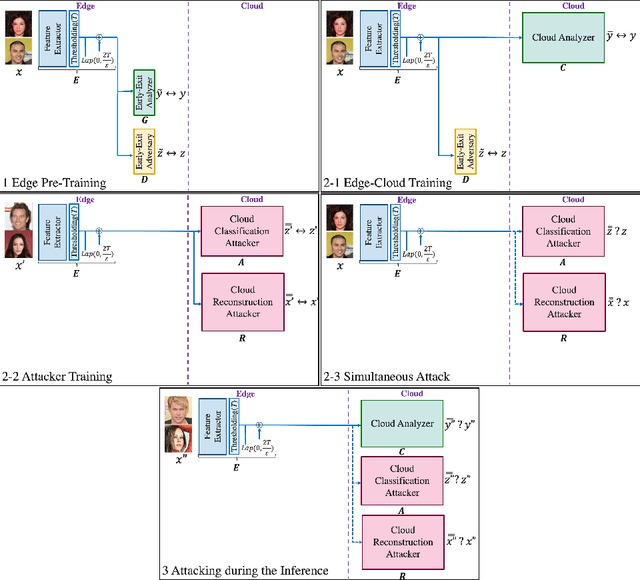
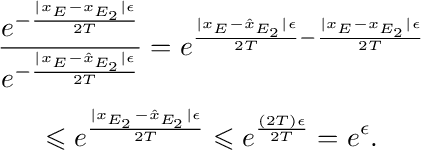
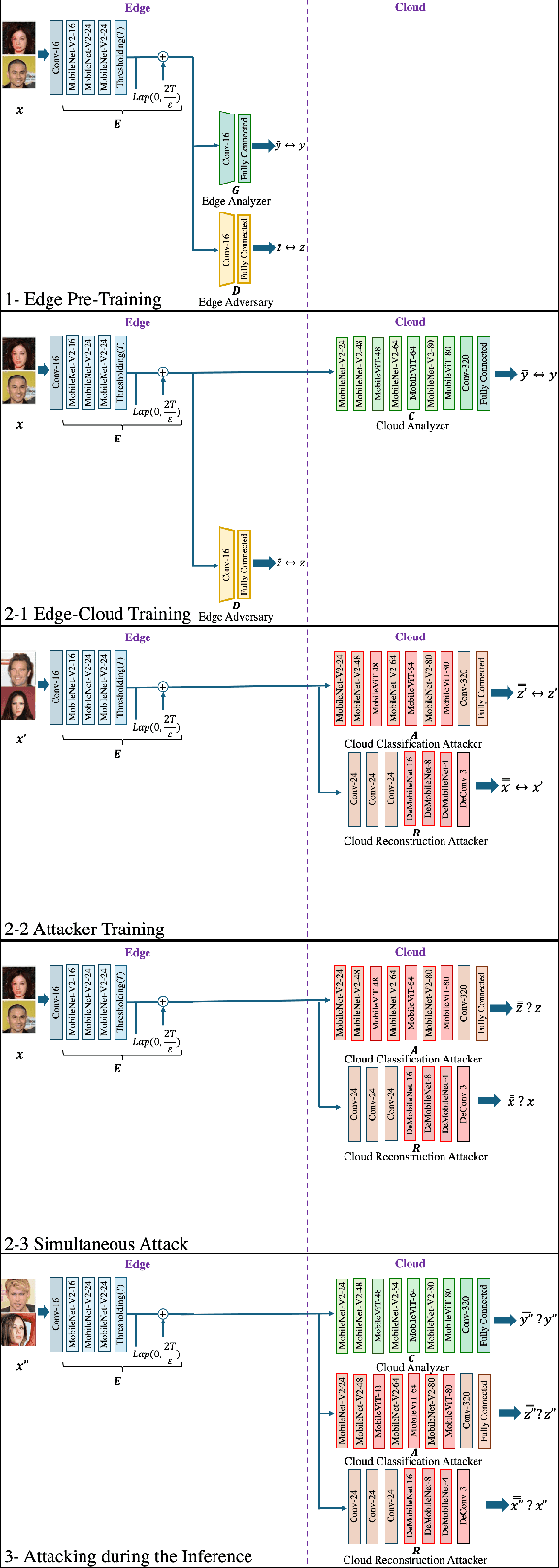

Abstract:The training phase of deep neural networks requires substantial resources and as such is often performed on cloud servers. However, this raises privacy concerns when the training dataset contains sensitive content, e.g., face images. In this work, we propose a method to perform the training phase of a deep learning model on both an edge device and a cloud server that prevents sensitive content being transmitted to the cloud while retaining the desired information. The proposed privacy-preserving method uses adversarial early exits to suppress the sensitive content at the edge and transmits the task-relevant information to the cloud. This approach incorporates noise addition during the training phase to provide a differential privacy guarantee. We extensively test our method on different facial datasets with diverse face attributes using various deep learning architectures, showcasing its outstanding performance. We also demonstrate the effectiveness of privacy preservation through successful defenses against different white-box and deep reconstruction attacks.
Hierarchical Training of Deep Neural Networks Using Early Exiting
Mar 19, 2023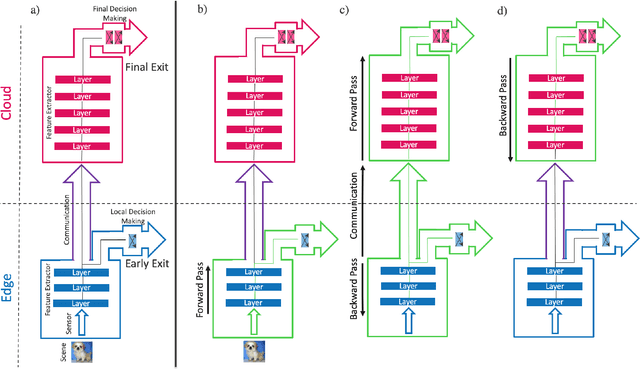
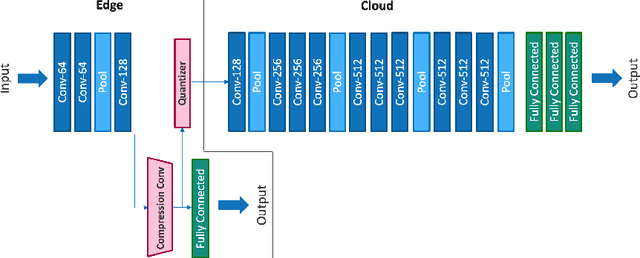
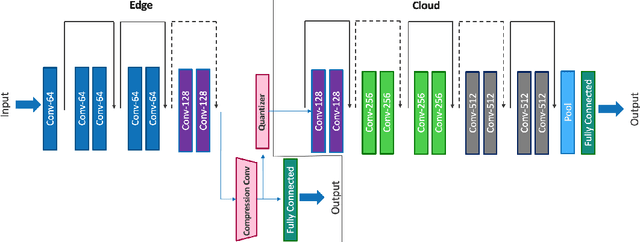
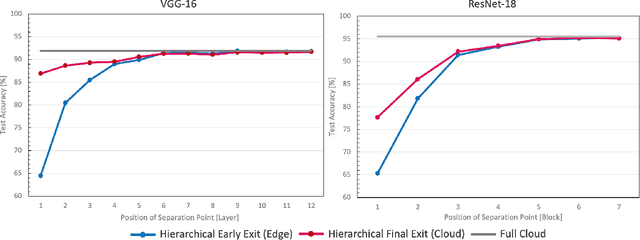
Abstract:Deep neural networks provide state-of-the-art accuracy for vision tasks but they require significant resources for training. Thus, they are trained on cloud servers far from the edge devices that acquire the data. This issue increases communication cost, runtime and privacy concerns. In this study, a novel hierarchical training method for deep neural networks is proposed that uses early exits in a divided architecture between edge and cloud workers to reduce the communication cost, training runtime and privacy concerns. The method proposes a brand-new use case for early exits to separate the backward pass of neural networks between the edge and the cloud during the training phase. We address the issues of most available methods that due to the sequential nature of the training phase, cannot train the levels of hierarchy simultaneously or they do it with the cost of compromising privacy. In contrast, our method can use both edge and cloud workers simultaneously, does not share the raw input data with the cloud and does not require communication during the backward pass. Several simulations and on-device experiments for different neural network architectures demonstrate the effectiveness of this method. It is shown that the proposed method reduces the training runtime by 29% and 61% in CIFAR-10 classification experiment for VGG-16 and ResNet-18 when the communication with the cloud is done at a low bit rate channel. This gain in the runtime is achieved whilst the accuracy drop is negligible. This method is advantageous for online learning of high-accuracy deep neural networks on low-resource devices such as mobile phones or robots as a part of an edge-cloud system, making them more flexible in facing new tasks and classes of data.
Adaptation of MobileNetV2 for Face Detection on Ultra-Low Power Platform
Aug 23, 2022
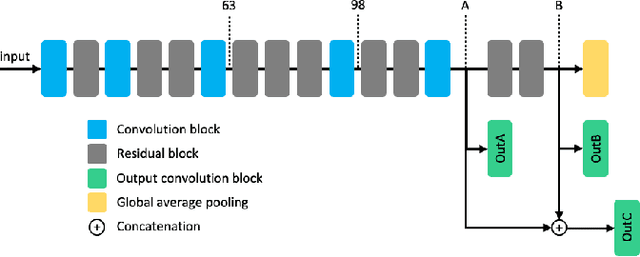
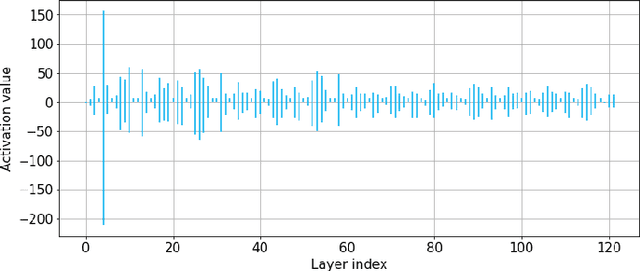
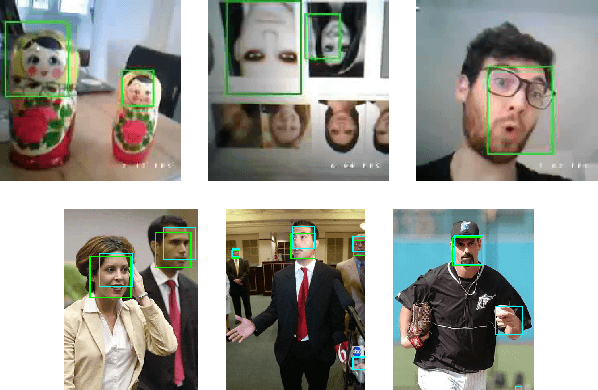
Abstract:Designing Deep Neural Networks (DNNs) running on edge hardware remains a challenge. Standard designs have been adopted by the community to facilitate the deployment of Neural Network models. However, not much emphasis is put on adapting the network topology to fit hardware constraints. In this paper, we adapt one of the most widely used architectures for mobile hardware platforms, MobileNetV2, and study the impact of changing its topology and applying post-training quantization. We discuss the impact of the adaptations and the deployment of the model on an embedded hardware platform for face detection.
Optimizing the Consumption of Spiking Neural Networks with Activity Regularization
Apr 04, 2022
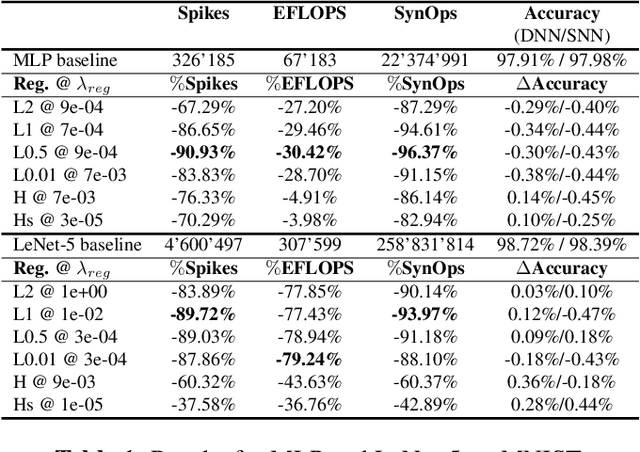


Abstract:Reducing energy consumption is a critical point for neural network models running on edge devices. In this regard, reducing the number of multiply-accumulate (MAC) operations of Deep Neural Networks (DNNs) running on edge hardware accelerators will reduce the energy consumption during inference. Spiking Neural Networks (SNNs) are an example of bio-inspired techniques that can further save energy by using binary activations, and avoid consuming energy when not spiking. The networks can be configured for equivalent accuracy on a task through DNN-to-SNN conversion frameworks but their conversion is based on rate coding therefore the synaptic operations can be high. In this work, we look into different techniques to enforce sparsity on the neural network activation maps and compare the effect of different training regularizers on the efficiency of the optimized DNNs and SNNs.
Privacy-Preserving Image Acquisition Using Trainable Optical Kernel
Jun 28, 2021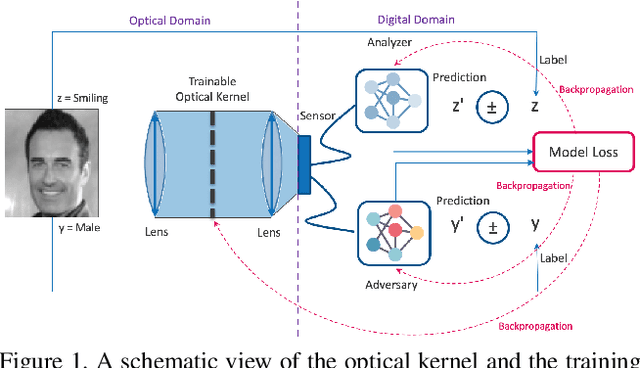
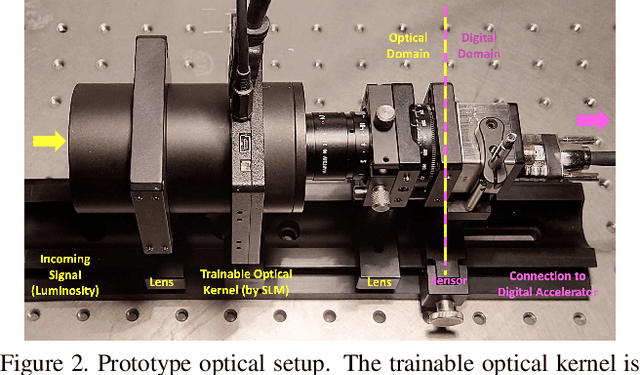
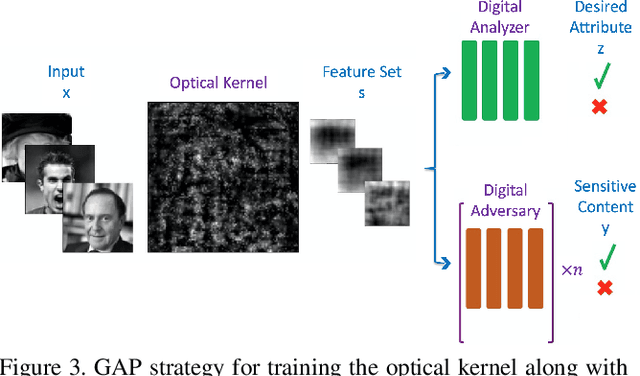
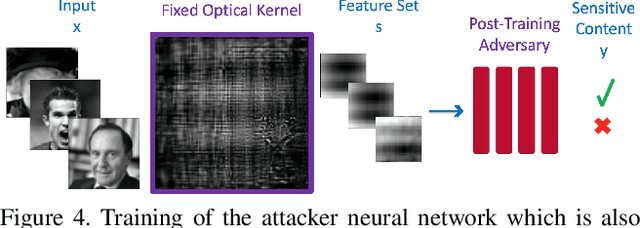
Abstract:Preserving privacy is a growing concern in our society where sensors and cameras are ubiquitous. In this work, for the first time, we propose a trainable image acquisition method that removes the sensitive identity revealing information in the optical domain before it reaches the image sensor. The method benefits from a trainable optical convolution kernel which transmits the desired information while filters out the sensitive content. As the sensitive content is suppressed before it reaches the image sensor, it does not enter the digital domain therefore is unretrievable by any sort of privacy attack. This is in contrast with the current digital privacy-preserving methods that are all vulnerable to direct access attack. Also, in contrast with the previous optical privacy-preserving methods that cannot be trained, our method is data-driven and optimized for the specific application at hand. Moreover, there is no additional computation, memory, or power burden on the acquisition system since this processing happens passively in the optical domain and can even be used together and on top of the fully digital privacy-preserving systems. The proposed approach is adaptable to different digital neural networks and content. We demonstrate it for several scenarios such as smile detection as the desired attribute while the gender is filtered out as the sensitive content. We trained the optical kernel in conjunction with two adversarial neural networks where the analysis network tries to detect the desired attribute and the adversarial network tries to detect the sensitive content. We show that this method can reduce 65.1% of sensitive content when it is selected to be the gender and it only loses 7.3% of the desired content. Moreover, we reconstruct the original faces using the deep reconstruction method that confirms the ineffectiveness of reconstruction attacks to obtain the sensitive content.
Leveraging Spatial and Photometric Context for Calibrated Non-Lambertian Photometric Stereo
Mar 22, 2021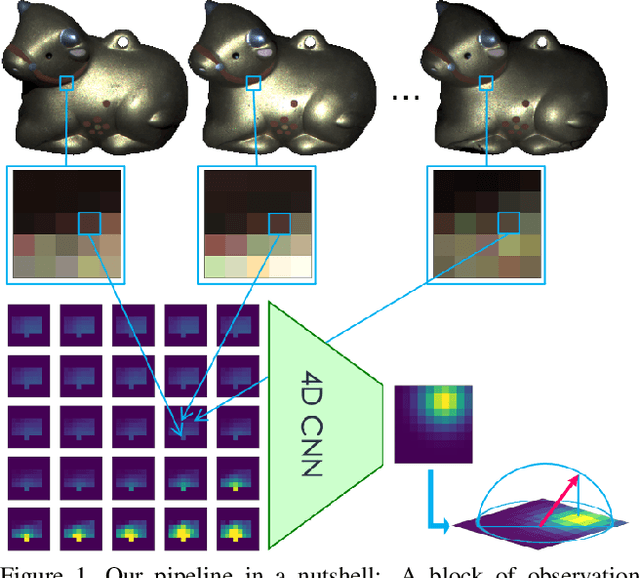

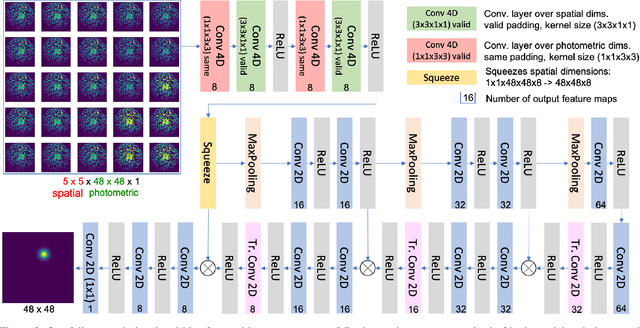
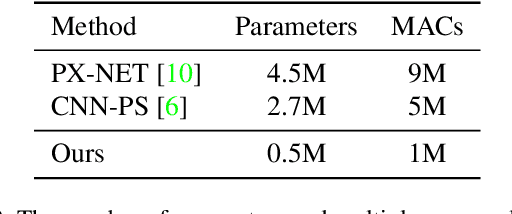
Abstract:The problem of estimating a surface shape from its observed reflectance properties still remains a challenging task in computer vision. The presence of global illumination effects such as inter-reflections or cast shadows makes the task particularly difficult for non-convex real-world surfaces. State-of-the-art methods for calibrated photometric stereo address these issues using convolutional neural networks (CNNs) that primarily aim to capture either the spatial context among adjacent pixels or the photometric one formed by illuminating a sample from adjacent directions. In this paper, we bridge these two objectives and introduce an efficient fully-convolutional architecture that can leverage both spatial and photometric context simultaneously. In contrast to existing approaches that rely on standard 2D CNNs and regress directly to surface normals, we argue that using separable 4D convolutions and regressing to 2D Gaussian heat-maps severely reduces the size of the network and makes inference more efficient. Our experimental results on a real-world photometric stereo benchmark show that the proposed approach outperforms the existing methods both in efficiency and accuracy.
Efficient Blind-Spot Neural Network Architecture for Image Denoising
Aug 25, 2020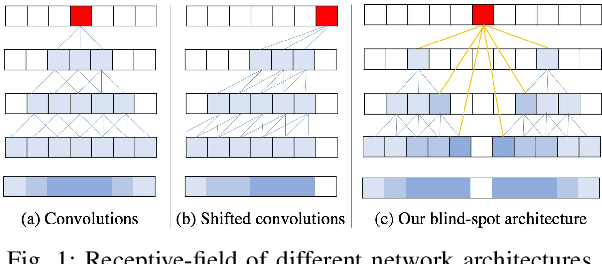
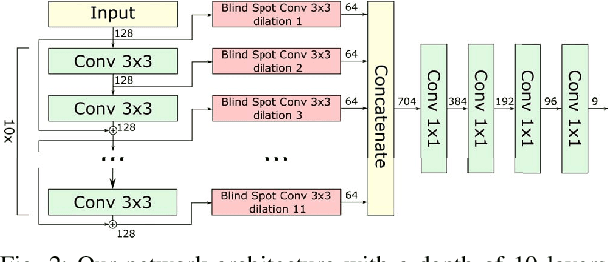
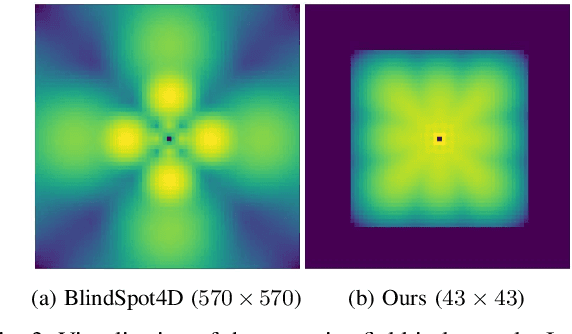
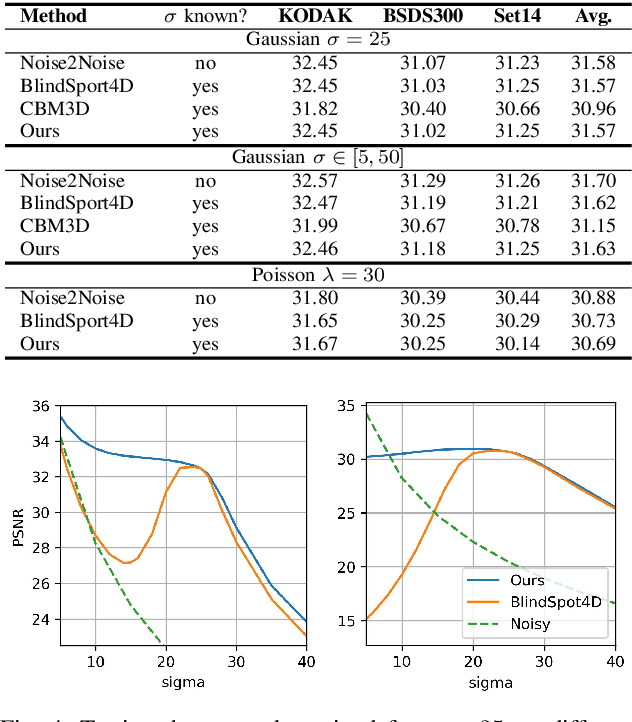
Abstract:Image denoising is an essential tool in computational photography. Standard denoising techniques, which use deep neural networks at their core, require pairs of clean and noisy images for its training. If we do not possess the clean samples, we can use blind-spot neural network architectures, which estimate the pixel value based on the neighbouring pixels only. These networks thus allow training on noisy images directly, as they by-design avoid trivial solutions. Nowadays, the blind-spot is mostly achieved using shifted convolutions or serialization. We propose a novel fully convolutional network architecture that uses dilations to achieve the blind-spot property. Our network improves the performance over the prior work and achieves state-of-the-art results on established datasets.
Learning Generative Models using Denoising Density Estimators
Jan 08, 2020
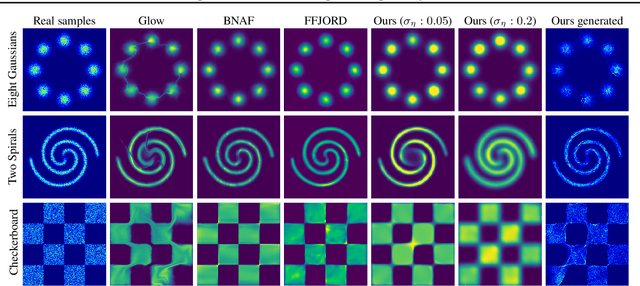


Abstract:Learning generative probabilistic models that can estimate the continuous density given a set of samples, and that can sample from that density, is one of the fundamental challenges in unsupervised machine learning. In this paper we introduce a new approach to obtain such models based on what we call denoising density estimators (DDEs). A DDE is a scalar function, parameterized by a neural network, that is efficiently trained to represent a kernel density estimator of the data. Leveraging DDEs, our main contribution is to develop a novel approach to obtain generative models that sample from given densities. We prove that our algorithms to obtain both DDEs and generative models are guaranteed to converge to the correct solutions. Advantages of our approach include that we do not require specific network architectures like in normalizing flows, ordinary differential equation solvers as in continuous normalizing flows, nor do we require adversarial training as in generative adversarial networks (GANs). Finally, we provide experimental results that demonstrate practical applications of our technique.
Image Restoration using Plug-and-Play CNN MAP Denoisers
Dec 20, 2019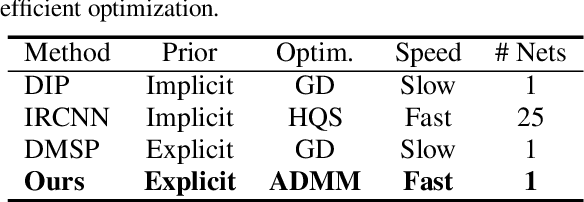
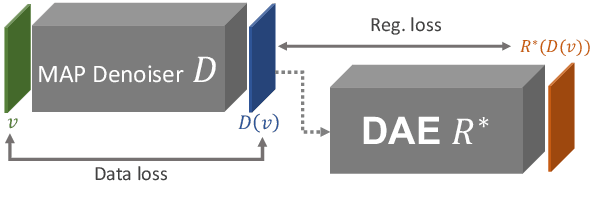


Abstract:Plug-and-play denoisers can be used to perform generic image restoration tasks independent of the degradation type. These methods build on the fact that the Maximum a Posteriori (MAP) optimization can be solved using smaller sub-problems, including a MAP denoising optimization. We present the first end-to-end approach to MAP estimation for image denoising using deep neural networks. We show that our method is guaranteed to minimize the MAP denoising objective, which is then used in an optimization algorithm for generic image restoration. We provide theoretical analysis of our approach and show the quantitative performance of our method in several experiments. Our experimental results show that the proposed method can achieve 70x faster performance compared to the state-of-the-art, while maintaining the theoretical perspective of MAP.
 Add to Chrome
Add to Chrome Add to Firefox
Add to Firefox Add to Edge
Add to Edge